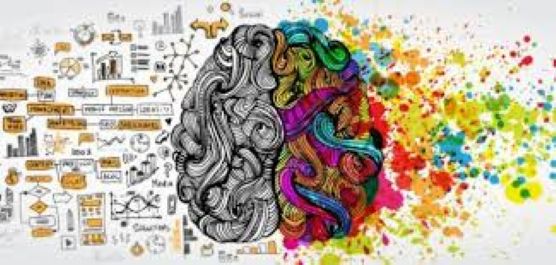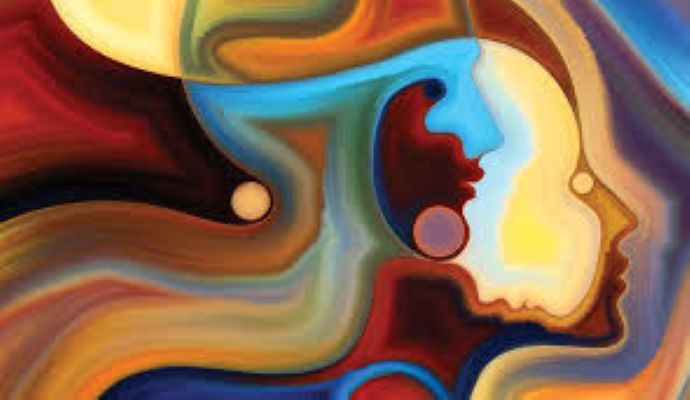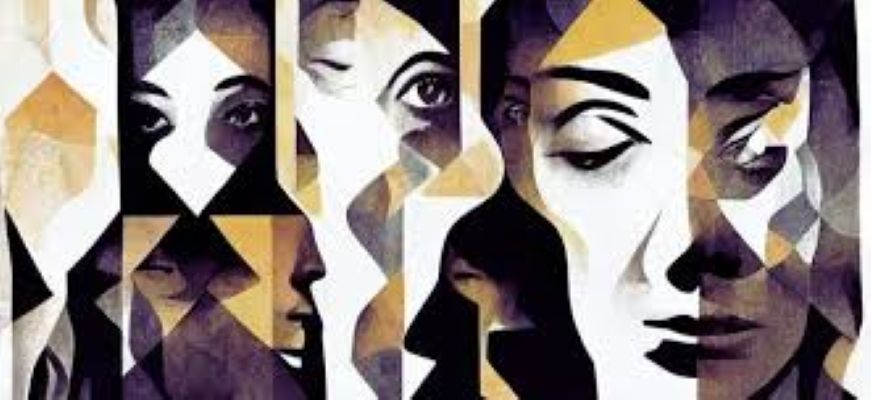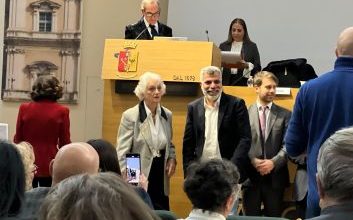Link between Literature and Psychology

Psychology has had enormous influence on creative writing—fiction, drama, and poetry. Literature and psychology share common ground within aesthetics
Souad Khalil | Libya
Some may wonder about the relationship that connects literature with psychology. We point out that both are concerned with human behavior, its motives, and its capacity to create myths and use symbols. Through this process, both fields engage in studying the subjective dimension of the human being. With the integration of psychoanalysis into psychology—meaning the study of the unconscious through the symbols it produces—literature found itself increasingly relying on the knowledge emerging from Sigmund Freud’s early‑twentieth‑century discoveries about the human psyche. Any study of literature and psychology must equally consider the direct enrichment that imaginative and creative writing receives from psychoanalysis, as well as the tools that literary criticism and autobiography have borrowed from psychology and psychoanalytic theory.
In Leon Edel’s study of literature and psychology, translated by Dr. Fouad Abdul‑Mutalib, we find that human self‑observation and the examination of emotions date back to Aristotle. However, this did not clearly emerge until the rise of Romanticism. Creative artists perceived—more deeply than before—the ability of the poet to generate unconscious imagination. Examples include Rousseau in his attempt to retrieve and analyze his early experiences; Goethe in his belief that imagination must be occupied with the human interior; Blake with his personal mythology and symbolic sensibility; and Coleridge with his understanding of the voluntary flights of human contemplation not governed by law—daydreams, dreams, and the forms of one’s deeper being.
 These writers found themselves engaged in a process of psychological discovery. German Romantic critics such as Friedrich Schlegel and Jean Paul, in their search for the natural laws that give rise to poetry, pursued similar goals on the critical level. Balzac, in presenting *The Human Comedy*, recognized neural and cerebral phenomena proving the existence of an unexplored world—“psychology.” Hawthorne, the American novelist, spoke of the scattered realm of sleep and believed that modern psychology would transform the world of dreams into a system instead of dismissing them as mere fantasies. The works of Dostoevsky, Strindberg, Ibsen, and Henry James throughout the nineteenth century demonstrated profound insight into the unconscious motivations of humans—insight similar to Coleridge’s. Meanwhile, the Symbolist movement in France, with its insistence on impression, feeling, and sensory experience, anticipated certain observations of psychoanalysis, even though these ideas did not appear formally until 1900 with Freud’s *Interpretation of Dreams*, which revealed to students of literature the relationship between the poet’s dreams and his actual creativity.
These writers found themselves engaged in a process of psychological discovery. German Romantic critics such as Friedrich Schlegel and Jean Paul, in their search for the natural laws that give rise to poetry, pursued similar goals on the critical level. Balzac, in presenting *The Human Comedy*, recognized neural and cerebral phenomena proving the existence of an unexplored world—“psychology.” Hawthorne, the American novelist, spoke of the scattered realm of sleep and believed that modern psychology would transform the world of dreams into a system instead of dismissing them as mere fantasies. The works of Dostoevsky, Strindberg, Ibsen, and Henry James throughout the nineteenth century demonstrated profound insight into the unconscious motivations of humans—insight similar to Coleridge’s. Meanwhile, the Symbolist movement in France, with its insistence on impression, feeling, and sensory experience, anticipated certain observations of psychoanalysis, even though these ideas did not appear formally until 1900 with Freud’s *Interpretation of Dreams*, which revealed to students of literature the relationship between the poet’s dreams and his actual creativity.
In subsequent years, Freud’s studies of non‑literary issues proved useful in clarifying questions regarding intelligence and its relation to the unconscious, the notion of wish‑fulfillment, neurosis, and the associative nature of symbols. All of these are applicable to literary study. Freud’s writings on the nature of art and the artist—collected in 1924 under “A Psychoanalytic Study of Poetry and Art”—were highly important to literary criticism and biography. They included his psychoanalytic reading of the novella ‘Gradiva’ by Wilhelm Jensen, his essay on Leonardo da Vinci and childhood memory, and his study of patricide/matricide in Dostoevsky. Freud believed that art represents an attempt by the artist to satisfy certain desires—an act of love for the world and a search for approval. Yet the artist also satisfies universal desires in his audience, thereby expanding the concept of catharsis. He considered art an intermediate realm between desire and its imaginative fulfillment. However, Freud repeatedly emphasized that psychoanalysis can never fully explain the mysteries of artistic creation.
Today, Freud’s views on creativity remain influential and contemplative. Ego psychology later explored how artists use their art to confront and alleviate internal imbalance. Ernest Kris, in his crucial concept of “regression in the service of the ego,” proposed that art can act as an unconscious therapeutic mechanism—just like dreams—which helps dissolve inner conflicts and anxiety. Thus, art is not necessarily the product of neurosis, as Freud suggested, but may instead express the artist’s will toward psychological health.
Freud’s essays on literature, though insightful, were limited by their therapeutic framework. In 1910, Wilhelm Stekel’s ‘Poetry and Neurosis’ applied Freudian ideas to artistic creativity by treating the artist as a patient in perpetual need of therapy. Advocates of applied psychoanalysis included Charles Baudouin, Gaston Bachelard, Robert Grefen, Northrop Frye, and many others. In later decades, Edmund Wilson, Kenneth Burke, and others attempted to mediate between psychoanalytic concepts and literary criticism. Leon Edel himself attempted to harmonize both systems in his work on literary biography.
The most significant direct influence of psychoanalysis on literature appeared in Surrealism. André Breton, the founder of the movement, was deeply influenced by Freud during World War I. After meeting Freud in Vienna, he abandoned medical studies and dedicated himself to exploring the role of the unconscious in art. He coined the term “Surrealism” to describe the union of dream states and reality in pursuit of what he believed to be absolute truth. Surrealists engaged in observing the unconscious through dream documentation, automatic writing, and experiments related to hypnosis—attempts to capture dream imagery in its early, incomplete form.
Literary historians note that Surrealism began as an investigation of involuntary poetic imagination and evolved into a study of subjective experience. Language became a personal signature of the artist—as in abstract painting—where writers handled highly personal symbols. Often, the external world was denied in favor of inner reality. Freud opposed this application of psychoanalysis to art, arguing that the unconscious contains only the raw materials of art, which must undergo conscious organization. He emphasized that the great artist knows how to strip away what is overly personal to allow others to share in the enjoyment of his work.
Parallel to Freud’s discoveries of the unconscious in art, literary experiments were unfolding in narrative technique, especially ‘Stream of Consciousness’ and ‘interior monologue’. Writers in different countries attempted to narrate from within the mind of the fictional character, placing the reader inside the character’s thoughts and sensations. This represented a revolution in narrative technique: time became psychological, and events were presented in the order they entered consciousness—through sensory stimuli, memory, and association. The omniscient author disappeared, compelling the reader to infer the story from emotional and mental fragments.
The stream‑of‑consciousness technique was influenced by Henri Bergson’s idea of human, as opposed to spatial, time, as well as memory processes. William James contributed significantly with his psychological analyses of thought and was the first to use the metaphor “stream of consciousness.” Meanwhile, German and French Symbolists, inspired by Wagner’s use of leitmotif, attempted to create verbal representations of the “objective correlative” of consciousness—using language that evokes associative memory and momentary experience. This led to numerous literary attempts to capture the immediacy of lived moments.
Leon Edel offers a deep distinction between stream of consciousness and classical dramatic soliloquy: the former reflects the actual disorderly flow of thought, shaped by collisions with external stimuli, containing even the “waste” of mental life. One of the earliest attempts to narrate entirely from within was Eduard Dujardin’s ‘Les Lauriers sont coupés’, inspired by Wagner’s repeated motifs, and designed to capture thought in its deepest, nearly unconscious forms. Henry James echoed Goethe in encouraging novelists to recreate the atmosphere of the mind.
 Regarding psychology and criticism, Edel notes that while psychology has been successful in biography, its use in literary criticism is far more challenging. Psychoanalytic critics often begin by studying a text, but soon treat it as a direct extension of the author’s psyche—as if it were a dream. Psychology can be used in criticism to analyze human situations and fictional characters in novels and plays, as well as forms of metaphor and imagery in poetry. Some psychological concepts have been applied calmly and productively to poetry analysis. Richards and Empson’s theories of ambiguity, for example, have roots in early psychological insights into the duality of human nature and symbolic invention.
Regarding psychology and criticism, Edel notes that while psychology has been successful in biography, its use in literary criticism is far more challenging. Psychoanalytic critics often begin by studying a text, but soon treat it as a direct extension of the author’s psyche—as if it were a dream. Psychology can be used in criticism to analyze human situations and fictional characters in novels and plays, as well as forms of metaphor and imagery in poetry. Some psychological concepts have been applied calmly and productively to poetry analysis. Richards and Empson’s theories of ambiguity, for example, have roots in early psychological insights into the duality of human nature and symbolic invention.
In this light, we may consider Ernest Jones’s essay “Hamlet and Oedipus.” Although speculative and limited in explaining the universal power of Shakespeare’s play, it remains a theoretical attempt to explore Hamlet’s Oedipal conflict. The risk in such analysis lies in treating linguistic and emotional constructs as real human beings. Literary characters must maintain the illusion of reality. It is useful, for example, to view Raskolnikov in ‘Crime and Punishment’ as an embodiment of repressed irrational violence. Even the dream Dostoevsky assigns him helps us understand how humans create symbolic stories out of emotion.
The author provides many examples of writers whose works integrated psychology, including Tolstoy in ‘Anna Karenina’, which explores how life intervenes in high emotional narratives and reflects psychological states such as depression. Numerous works demonstrate how psychology accompanies literary creation.
Concerning creativity and psychology, pre‑Freudian literary studies often traced biographical sources to determine how life shaped artistic creation. With psychoanalysis came a shift toward examining the structure of imagination and the underlying consistency of a writer’s creative world—poetic, dramatic, or narrative. Critics now acknowledge that most creative writers do not live in libraries; even when they read extensively, books serve mainly as fuel for imagination rather than as its substance. Researchers today examine whether literary sources merge in the unconscious to produce new works and why a writer is drawn to certain materials over others.
Some literary critics note that psychoanalytic studies of authors often lead to labeling the artist as neurotic, reducing art to childhood residues. Lionel Trilling, in his essay “Art and Neurosis,” concludes that although the artist may share certain neuroses with others, he nevertheless possesses the strength to plan, work, and complete a significant creation. Psychoanalytic criticism, when properly applied, can clarify the creative process. Charles Lamb once wrote that “the true poet dreams while awake”—meaning he is not possessed by his subject but controls it. Psychoanalytic critics amend this by saying the artist may be possessed by his subject yet remains capable of mastering it.
 Psychology has had enormous influence on creative writing—fiction, drama, and poetry. Literature and psychology share common ground within aesthetics. The relationship between reader and text dates back to the earliest eras of literature. Even in Homer’s epics, we find techniques designed to maintain the listener’s attention.
Psychology has had enormous influence on creative writing—fiction, drama, and poetry. Literature and psychology share common ground within aesthetics. The relationship between reader and text dates back to the earliest eras of literature. Even in Homer’s epics, we find techniques designed to maintain the listener’s attention.
Every reader brings personal knowledge and emotional vocabulary to a story’s ambiguous elements. Clinical experiments in psychoanalysis—using ambiguous stimuli such as Rorschach inkblots or highly structured materials like literary texts—offer clues to how evoke responses related to personal needs and personality structure.
The essential factors defining the relationship between literature and psychology may be summarized as follows:
- Literary psychology concerns the human creation of myths and imaginative symbols, and the search for language and form to express them.
- It studies the structure and content of a work of literature, the imagination that shapes it, and the patterns of behavior it portrays—examined in light of what we know about the unconscious and its complementary functions.
- The unity of a literary work as a product of creative personality must be distinguished from the biography of the writer, though both may be studied together when examining creativity.
- Therapeutic techniques in psychiatry and psychoanalysis are far removed from literary psychology.
The relationship between literature and psychology emerges as an intriguing field of study, as both domains delve into the depths of human experience and the dimensions of consciousness and the unconscious. The ideas and theories presented by psychologists, such as Sigmund Freud, have contributed to our understanding of how unconscious motives influence literary creativity. Literature serves as a mirror reflecting the psychological struggles and internal experiences of the artist, while psychology aids in analyzing and comprehending these experiences.
Through this integration of literature and psychology, we find that writers’ abilities to explore symbols and myths reflect the hidden motives that reside within the human psyche. Thus, studying the relationship between literature and psychology is not merely an academic exercise; it pertains to a deeper understanding of the human experience in all its complexities.
In conclusion, this relationship offers valuable tools for reflection on literary arts, enabling us to gain a better appreciation for the literary works that constitute a significant part of our culture and human identity.
(Reference:“Literature and Psychology,” translated by Dr. Fouad Abdul‑Mutalib.)
Read: Prose Poetry: From Chaos to Rebellion
_________________
 Souad Khalil, hailing from Libya, is a writer, poet, and translator. She has been writing on culture, literature and other general topics.
Souad Khalil, hailing from Libya, is a writer, poet, and translator. She has been writing on culture, literature and other general topics.




